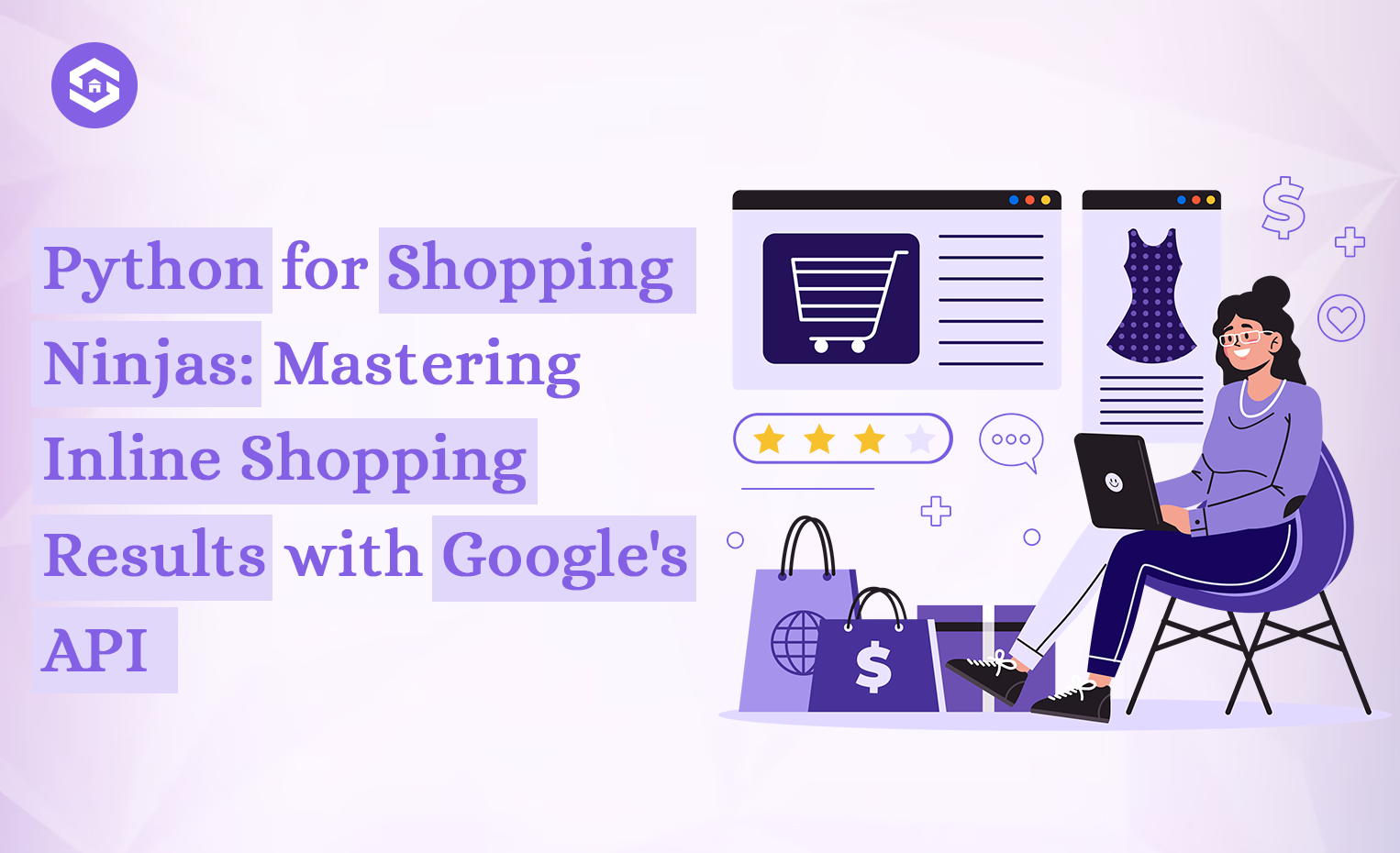Shopping Made Simpler: Mastering Google Inline Shopping Results with Python
7 min read
7 min read

Table of Contents
Table of Contents
Have you ever found yourself scrolling through Google search results, only to stumble upon that perfect product nestled right there amongst the web pages?
There’s no need to click through endless links—Google’s inline shopping results let you compare prices and retailers from the comfort of the search page. But what if you could harness the power of these results with a bit of Python magic?
This guide dives into the world of Google inline shopping results with Python, showing you how to unlock valuable product information and streamline your online shopping experience.
We’ll keep things clear and concise, focusing on practical steps you can take, even if you’re new to Python.

Imagine searching for a new pair of running shoes. Google’s inline shopping results display product listings directly on the search page, with prices and retailer links. This saves you the hassle of visiting individual store websites and lets you compare options at a glance.
But there’s more! With Python, you can delve deeper into these results, extracting specific details like product titles, descriptions, and current prices. The below information is used for various purposes, such as:
While Google discourages scraping its search results (extracting data programmatically), some libraries can help us interact with webpages safely and responsibly. Here are two popular options:
These libraries work seamlessly together. Requests fetch the webpage content, and Beautiful Soup helps us dissect it and find valuable product information.
Now, let’s get our hands dirty with some Python code! Here’s a simplified breakdown of the process:
Import the Libraries: We import the requests and BeautifulSoup libraries.
Craft the Search URL: We build the Google search URL with the desired keywords. For example, to search for running shoes, the URL might look like:
Fetch the Webpage: We use “requests.get” to retrieve the webpage content as a response object.
Parse the HTML: We use BeautifulSoup to parse the webpage content (stored in the response object) and create a “soup” object.
Target the Shopping Results: Now comes the exciting part! We need to identify the HTML elements that contain the inline shopping results. Google’s structure might change over time, but you can often find clues by inspecting the components on the search page (right-click and choose “Inspect”). Look for patterns in the HTML tags associated with the shopping results.
Let’s imagine (for illustrative purposes) that Google uses a specific class name like “shopping-result” for each inline product listing. We can use Beautiful Soup’s “find_all” method to extract all elements with that class:
Extract Product Details: Now, we loop through each shopping result and use Beautiful Soup’s methods to extract relevant details like title, price, and retailer link. The specific tags and attributes might vary depending on Google’s structure, but here’s a general example:
Store or Utilize the Data: Once you have the extracted information, you can use it for various purposes. Here are some ideas:
Important Note: Remember to respect Google’s terms of service and avoid overwhelming their servers with excessive requests. Implement delays between requests and be a responsible user.
The provided code offers a foundational approach. As you delve deeper, you can explore more advanced techniques:
These advanced techniques ensure your code is robust and adaptable to potential changes in Google’s search result structure.
Here’s a more comprehensive Python script incorporating the steps discussed above:
This script demonstrates searching for a specific term, extracting product details from Google’s inline shopping results, and saving them to a CSV file. Remember to replace the placeholder class names with the ones used by Google in the current structure.
You can unlock valuable insights from Google’s inline shopping results by harnessing the power of Python and libraries like Beautiful Soup and Requests.
This empowers you to make informed purchasing decisions and streamline your online shopping experience.
So, the next time you encounter those enticing product listings on Google, remember – with Python magic, you can delve deeper and make the most of them!
While writing your own Python script offers a rewarding learning experience, alternative solutions are available. For those seeking a more convenient approach, consider SERPHouse (https://www.serphouse.com).
SERPHouse is a leading SERP API provider specializing in extracting data from Google search results and many more search engines, including inline shopping results.
With SERPHouse, you can leverage pre-built functionalities to access product titles, prices, retailer links, and other relevant information without writing custom code. This can save you valuable time and effort, especially if you’re new to SERP scraping with Python.
Remember: Always adhere to SERPHouse’s terms of service and Google’s guidelines when using any SERP API.
This comprehensive guide empowers you to conquer Google’s inline shopping results, whether you choose the Python path or explore solutions like SERPHouse. Happy Shopping!